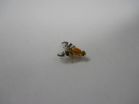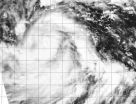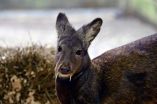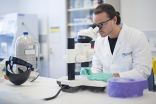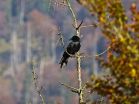(Press-News.org) Planting trees and creating green space in cities is good for attracting species, but it may not be enough to ensure biodiversity in built environments, a University of Iowa study has found.
The researchers surveyed two types of tree in an urban area in Iowa, and recorded the abundance of two insects that interact with them. They found that while there were plenty of the trees, black cherry and black walnut, they didn't find a corresponding abundance of the insects, in this case fruit flies that feed on the walnuts and black cherries and a type of wasp that feeds on the flies.
"In cities, you might have more trees, but you don't necessarily have more insects associated with them," says Andrew Forbes, associate professor of biology and an author on the paper, published online in the journal PLOS ONE. "There's still this real impact on diversity that's mediated by the landscape. This study implies that cities decrease diversity in some sort of fundamental, intrinsic way."
Amanda Nelson, a graduate student in biology at the UI, led a team of a dozen UI undergraduates who surveyed 250 sites in Iowa City for black cherry and black walnut trees. At sites where the researchers found trees, they collected fruit and counted the fruit flies found in the walnuts and cherries. They also counted the parasitic wasps that feed on the flies at each site. Although the cherry and walnut trees were more common in urban sites, Nelson and her team found fewer flies and wasps in these locations than in agricultural or undeveloped sites.
The researchers believe that barriers found in urban landscapes, such as built structures and paved areas, may make it difficult, if not impossible, for the insects to reach other trees, mate with other populations and thus enrich the gene pool. Nelson is trying to determine which physical barriers have the greatest impact on the insects by currently comparing the DNA of flies across urban sites.
"We can model how they're moving across the landscape and then compare that to the characteristics of landscapes that we think might be impeding them," says Nelson, who earned undergraduate degrees in biology and environmental science at the UI and is the corresponding author on the paper.
While other studies have examined the density of a single insect species across a range of landscapes, no other study has examined insect interactions across such a broad area, says Forbes. Nelson and her team sampled tens of thousands of fruits and counted hundreds of thousands of insects during the survey, which lasted from 2011 to 2013.
"Planting a tree in the city is not sufficient to then have walnut flies and the wasps that attack those walnut flies," says Forbes, who advised Nelson on the project. "We think there's something about the city that changes those dynamics, those interactions between plants and flies and the insects that eat those flies."
Despite this, Nelson thinks that finding ways for insects and people to share developed space is still an important goal to pursue.
"The responses of the diversity of organisms that could potentially share these developed areas with us can be really idiosyncratic. To promote the full diversity, we really have a lot to learn," says Nelson, who's from Exira, Iowa. "That doesn't mean our efforts are wasted, but it definitely means that we need to continue trying to learn to do a better job and be thoughtful about it."
INFORMATION:
The UI's Center for Global and Regional Environmental Research funded the work.
Green spaces don't ensure biodiversity in urban areas
University of Iowa study showed more trees did not correspond with more insects
2014-10-31
ELSE PRESS RELEASES FROM THIS DATE:
Improved mouse model will accelerate research on potential Ebola vaccines, treatments
2014-10-31
In the war against Ebola one important hurdle has just been cleared – by a mouse.
Researchers at the University of North Carolina at Chapel Hill and colleagues have developed the first genetic strain of mice that can be infected with Ebola and display symptoms similar to those that humans experience. This work, published in the current issue of Science, will significantly improve basic research on Ebola treatments and vaccines, which are desperately needed to curb the worldwide public health and economic toll of the disease.
"You can't look for a cure for Ebola ...
Scientists trigger self-destruct switch in lung cancer cells
2014-10-31
CANCER RESEARCH UK scientists have found a drug combination that can trigger the self-destruct process in lung cancer cells - paving the way for new treatments, according to research that will be presented at the National Cancer Research Institute (NCRI) Cancer Conference in Liverpool next week*.
When healthy cells are no longer useful they initiate a chain of events culminating in self destruction. But cancer cells swerve away from this suicide path and become immortal. This means that cells grow out of control – causing tumours to form.
The Cancer Research UK ...
Tropical Depression Nuri now haunting the western Pacific Ocean
2014-10-31
Tropical Depression Nuri formed on Halloween morning, October 31, and is haunting the waters of the western North Pacific Ocean. NASA-NOAA's Suomi NPP satellite captured a ghostly-white image of the storm.
When Suomi NPP flew over Tropical Depression Nuri on Oct. 31 at 3:36 UTC, the Visible Infrared Imaging Radiometer Suite or VIIRS instrument aboard captured an infrared image of the storm. The infrared data shows temperature, an indicated that there were very high thunderstorms with very cold cloud top temperatures surrounding the center of the low level circulation ...
Strange, fanged deer persists in Afghanistan
2014-10-31
WCS study confirms that endangered musk deer still live in Nuristan Province – some 60 years after last sighting
Species targeted by poachers: Musk deer scent glands are more valuable than gold
Study appears in the October issue of the journal Oryx
NEW YORK (October 31, 2014) – More than 60 years after its last confirmed sighting, a strange deer with vampire-like fangs still persists in the rugged forested slopes of northeast Afghanistan according to a research team led by the Wildlife Conservation Society (WCS), which confirmed the species presence during ...
A matter of life and death: Cell death proteins key to fighting disease
2014-10-31
Melbourne researchers have uncovered key steps involved in programmed cell death, offering new targets for the treatment of diseases including lupus, cancers and neurodegenerative diseases.
The research teams from the Walter and Eliza Hall Institute worked together to discover the three-dimensional structure of a key cell death protein called Bak and reveal the first steps in how it causes cell death. Their studies were published in Molecular Cell and Proceedings of the National Academy of Sciences.
Programmed cell death, known as apoptosis, occurs naturally when ...
New step towards eradication of H5N1 bird flu
2014-10-31
A University of Adelaide-led project has developed a new test that can distinguish between birds that have been vaccinated against the H5N1 strain of avian influenza virus or "bird flu" with those that have been naturally infected.
This is a significant step in the fight against this often fatal strain of avian influenza which is widespread in the poultry populations of South East Asia, particularly Indonesia and Vietnam.
It causes global concern because of its possible transmission to humans and the threat of a pandemic if it mutates to a form that can be easily passed ...
'Divide and rule' -- raven politics
2014-10-31
Thomas Bugnyar and his team have been studying the behavior of approximately 300 wild ravens in the Northern Austrian Alps for years. They observed that ravens slowly build alliances through affiliative interactions such as grooming and playing. However, they also observed that these affiliative interactions were regularly interrupted by a third individual. Although in about 50 % of the cases these interventions were successful and broke up the two affiliating ravens, intervening can be potentially risky when the two affiliating ravens team up and chase away the intervening ...
Efficient genetic editing
2014-10-31
As potential next-generation therapeutics and research tools, few life sciences technologies hold more promise than genome-editing proteins – molecules that can be programmed to alter specific genes in order to treat or even cure genetic diseases.
There's at least one catch though – getting genome-editing proteins into cells, where they need to be to access the genome, is a major challenge, especially in live animals or human patients.
Conventionally, researchers have delivered the DNA encoding these genome-editing proteins into cells and then relied on ...
Countries can learn from Cyprus' 2013 economic crash, according to Imperial report
2014-10-31
In March 2013, Cyprus agreed to a €17 billion (£13.42 billion) international bailout by the International Monetary Fund (IMF), the European Central Bank (ECB) and the European Commission (EC).
The magnitude of the bailout was 100 per cent of Gross Domestic Product (GDP) and also involved a bank bail in. This is when the borrower's creditors are forced to bear some of the burden by having a portion of their debt written off in order for the bank to have sustainable level of debt.
The package of measures was aimed at preventing the country from facing the ...
Tweet much to gain popularity is an inefficient strategy
2014-10-31
The imbalanced structure of Twitter, where some users have many followers and the large majority barely has several dozen followers, means that messages from the more influential have much more impact. Less popular users can compensate for this by increasing their activity and their tweets, but the outcome is costly and inefficient. This was confirmed by an analysis of the social network performed by researchers from the Technical University of Madrid.
What can Twitter users do to increase their influence? To answer this question, a team of researchers at the Technical ...
LAST 30 PRESS RELEASES:
Advances in understanding the evolution of stomach loss in agastric fishes
Social media affects people’s views on mental illness
Aerogel-based PCMs improve thermal management, reduce microwave emissions in electronic devices
Undernourished household members at increased risk for developing TB after exposure
A non-equivalent co-doped strategy to effectively improve the electrical properties of BIT-based high-temperature piezoelectric ceramics
RAMP1 protects hepatocytes against ischemia-reperfusion injury by inhibiting the ERK/YAP pathway
Molecular mechanism of chemical diversity of thermophilic fungus and its ecological and biological functions
Engaging pharmacists to improve atrial fibrillation care
Exploring brain synchronization patterns during social interactions
Unveiling the molecular functions of lipid droplet proteins in Arabidopsis thaliana leaves
Perfecting the view on a crystal’s imperfection
Fossil frogs share their skincare secrets
Existing drugs studied in patients with rare immune diseases
Loma Linda University study reveals alarming rates of pediatric injuries from mechanical bull riding
Excessive pregnancy weight gain and substantial postpartum weight retention common in military health care beneficiaries
Odor-causing bacteria in armpits targeted using bacteriophage-derived lysin
Women’s heart disease is underdiagnosed, but new machine learning models can help solve this problem
Extracting high-purity gold from electrical and electronic waste
Tropical fish are invading Australian ocean water
No bull: How creating less-gassy cows could help fight climate change
ECU researchers call for enhanced research into common post-stroke condition
SharpeRatio@k: novel metric for evaluation of risk-return tradeoff in off-policy evaluation
$1.8M NIH grant will help researchers follow a virus on its path to the nucleus
Follow-up 50 years on finds landmark steroid study remains safe
Active military service may heighten women’s risk of having low birthweight babies
Significant global variation in national COVID-19 treatment guidelines
Cost increasingly important motive for quitting smoking for 1 in 4 adults in England
Is there an association between HPV vaccination and anti-NMDA receptor encephalitis?
Blood-based multi-omics guided detection of a precancerous pancreatic tumor
Eye-opener: Pupils enlarge when people focus on tasks
[Press-News.org] Green spaces don't ensure biodiversity in urban areasUniversity of Iowa study showed more trees did not correspond with more insects
